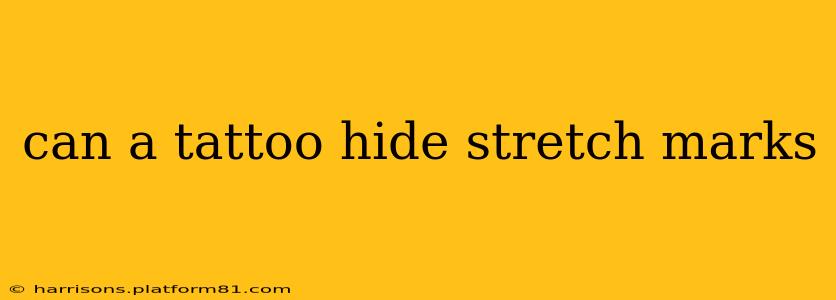Can a Tattoo Hide Stretch Marks?
Stretch marks, those pesky lines that appear on the skin due to rapid growth or weight fluctuations, can be a source of insecurity for many. While completely eliminating them is challenging, many people wonder if a tattoo can effectively camouflage them. The answer, as with many things, is nuanced and depends on several factors.
Understanding Stretch Marks and Tattoo Ink
Before diving into whether a tattoo can mask stretch marks, let's understand both. Stretch marks, also known as striae, are caused by the stretching and tearing of the dermis, the skin's middle layer. This results in thin, often reddish or purplish lines that eventually fade to a silvery-white color. The severity and visibility of stretch marks vary greatly from person to person.
Tattoos involve injecting ink into the dermis, the same layer affected by stretch marks. The depth of ink penetration and the type of ink used influence the final appearance of the tattoo. A skilled tattoo artist can strategically use color and design to minimize the appearance of stretch marks.
Can a Tattoo Effectively Hide Stretch Marks?
The effectiveness of a tattoo in hiding stretch marks depends on a few key factors:
-
Severity of the Stretch Marks: Fine, light-colored stretch marks are much easier to conceal than deep, wide, or darkly pigmented ones. For very prominent stretch marks, a tattoo might not completely hide them, but it can significantly lessen their visibility.
-
Tattoo Design and Color: A skilled artist can strategically choose a design and color palette that breaks up the lines of the stretch marks, making them less noticeable. Intricate designs, darker colors, and shading techniques are often effective camouflage tools. For instance, a large, detailed design can completely obscure smaller stretch marks, while a dark color can create a more uniform look over larger areas.
-
Skin Tone and Type: Skin tone influences how the tattoo interacts with stretch marks. Lighter skin might show the stretch marks more prominently, even with a tattoo, while darker skin tones might offer more natural camouflage.
-
Tattoo Artist's Skill: A highly skilled and experienced tattoo artist is crucial for a successful cover-up. They will assess your stretch marks, skin type, and preferences before suggesting an appropriate design and technique. Poorly executed tattoos can actually draw more attention to the stretch marks.
H2: What Kind of Tattoo Works Best for Hiding Stretch Marks?
Generally, larger, more intricate designs with a variety of colors and shading techniques work best to camouflage stretch marks. Simple, small tattoos are less effective in concealing them. The artist might suggest designs that strategically incorporate the stretch marks into the overall design, rather than attempting to hide them completely.
H2: Are There Other Ways to Treat or Minimize the Appearance of Stretch Marks?
While tattoos can offer a cosmetic solution, other treatments may minimize the appearance of stretch marks or improve skin texture. These include:
-
Topical Treatments: Retinoids, alpha-hydroxy acids (AHAs), and other topical creams can improve skin texture and reduce the visibility of stretch marks over time.
-
Laser Treatments: Different types of laser treatments can improve the appearance of stretch marks by stimulating collagen production and reducing the redness and discoloration.
-
Microneedling: This procedure creates tiny punctures in the skin, stimulating collagen production and improving skin texture.
H2: How Much Does a Cover-Up Tattoo Cost?
The cost of a cover-up tattoo varies considerably depending on the size, complexity, and location of the tattoo, as well as the artist's experience and location. It's often more expensive than a standard tattoo of the same size due to the increased skill and time involved.
H2: Can a Tattoo Make Stretch Marks Worse?
In most cases, a well-executed tattoo will not worsen stretch marks. However, it is crucial to select a reputable and experienced tattoo artist who understands how to work with this type of skin. Poor aftercare can lead to complications, so following the artist's instructions closely is important.
Conclusion:
A tattoo can be an effective way to hide or minimize the appearance of stretch marks, particularly if done by a skilled artist with a suitable design. However, it's essential to consider all factors before making a decision. Consulting with both a dermatologist and a reputable tattoo artist is recommended to explore all options and determine the best course of action for you. Remember that the result is highly dependent on individual factors and the skill of the tattoo artist.
